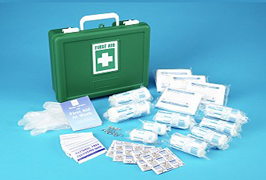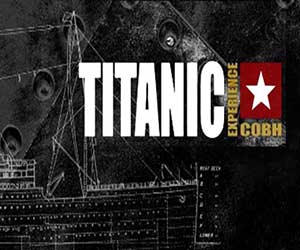First Aid Kit
The most basic and important rule in first aid is to always have an up-to-date and fully stocked first aid kit to hand. A well-stocked family first-aid kit can help you respond effectively to common injuries and emergencies.
Keep at least one first-aid kit in your home and one in your car. Store your kits in easy-to-retrieve locations but that are out of the reach of young children. (Children who are old enough to understand the purpose of the first aid kits should know where they are stored and instructed on how to use them.)
You can purchase first-aid kits at many pharmacies or assemble your own.
Contents For A First-Aid Kit
The content for a first-aid kit should include the following
1. Adhesive tape
2. Aluminium finger splints
3. Antibiotic ointment
4. Antiseptic solution
5. Bandages, including a roll of elastic wrap and bandage strip (plasters) in assorted sizes
6. Instant cold packs
7. Cotton balls and cotton-tipped swabs
8. Disposable latex or synthetic gloves, at least two pairs
9. Gauze pads and roller gauze in assorted sizes
10. Eye goggles1
11. First-aid manual
12. Petroleum jelly or other lubricant
13. Plastic bags for the disposal of contaminated materials
14. Safety pins in assorted sizes
15. Scissors, tweezers and a needle
16. Soap or instant hand sanitizer
17. Sterile eyewash, such as a saline solution
18. Thermometer
19. Triangular bandage
20. Turkey baster or other bulb suction device for flushing out wounds
Medication For Your First-Aid Kit
The following medications should also be kept with your first aid kit:
1. Anti-diarrhoea medication
2. Over-the-counter oral antihistamine
3. Aspirin and non-aspirin pain relievers (never give aspirin to children)
4. Calamine lotion
5. Over-the-counter hydrocortisone cream
6. Personal medications
7. If prescribed by your doctor, drugs to treat an allergic attack, such as an auto-injector of epinephrine (EpiPen)
8. Syringe, medicine cup or spoon
Contents For A Car First-Aid Kit
In the case of your first aid kit for your car you should also keep the following in the event of an emergency:
1. Mobile phone and recharger that uses the accessory plug in your car dash
2. Emergency phone numbers, including contact information for your family doctor and paediatrician, local emergency services, emergency road service providers etc.
3. Small, waterproof torch and extra batteries
4. Sunscreen
5. Emergency blanket
6. First-aid instruction manual
And finally, one of the most important things to do is to regularly update your first aid kit. Every 3 months you should check supplies such as batteries and replace them if necessary and of course renew and replace any medications or supplies that have passed their expiry date.
To further prepare yourself for a possible medical emergency, take a first-aid course.
St John’s Ambulance Brigade of Ireland offers both day time and night time first aid courses. Be sure the course covers cardiopulmonary resuscitation (CPR) and how to use an automatic external defibrillator (AED). Renew your CPR certification at least every two years.








